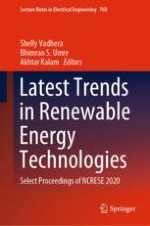2021 | OriginalPaper | Chapter
Review of Experimental Study of Carbon Dioxide as Working Fluid Integrated with Phase Change Material in Solar Receiver
Authors : Ranjeet Singh, Chandrashekara M.
Published in: Latest Trends in Renewable Energy Technologies
Publisher: Springer Singapore
Activate our intelligent search to find suitable subject content or patents.
Select sections of text to find matching patents with Artificial Intelligence. powered by
Select sections of text to find additional relevant content using AI-assisted search. powered by
